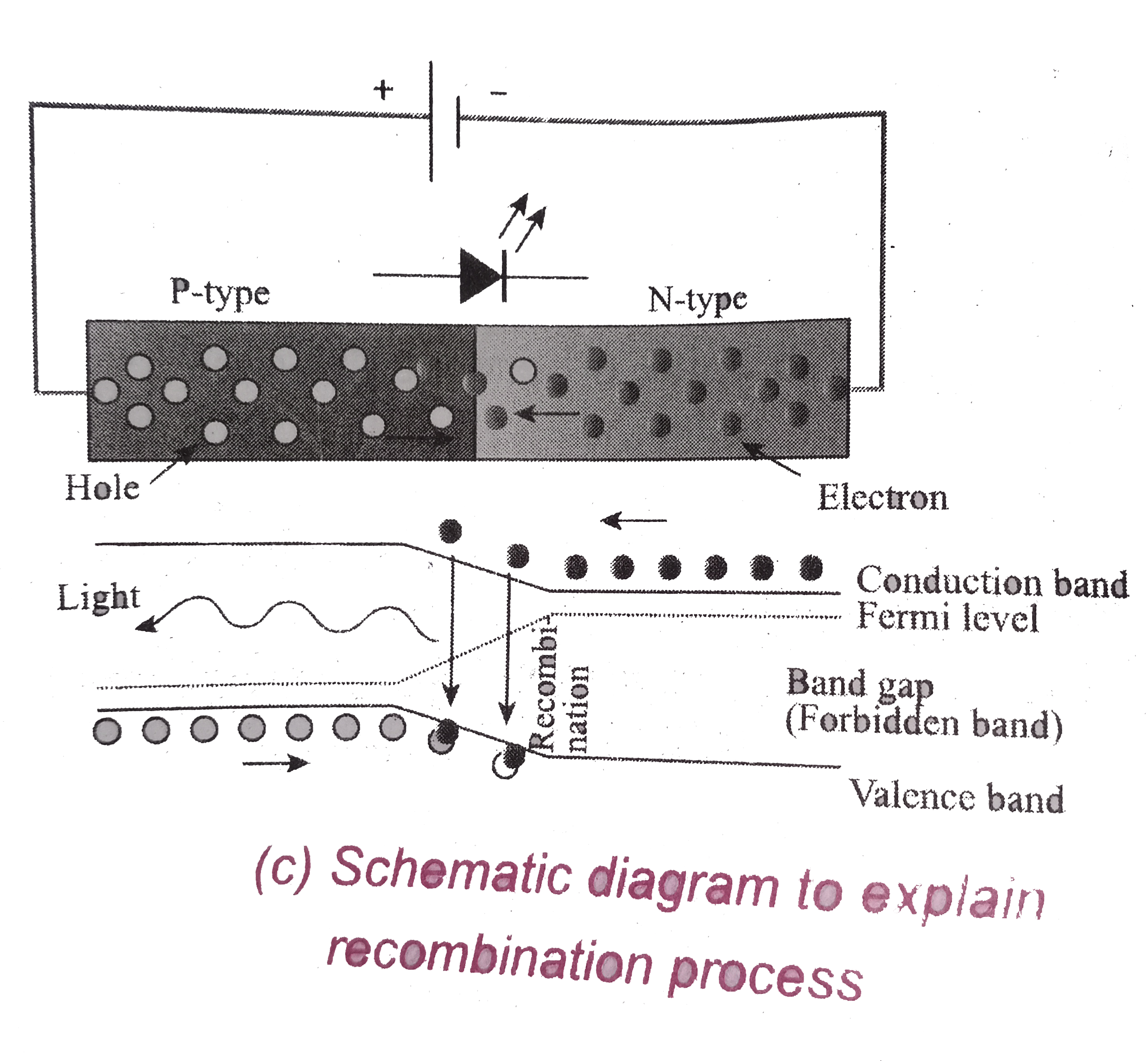What is an LED? Give the principle of operation with a diagram .
Text Solution
Light Emitting Diode (LED) is ap-n junction diode which emitts visible or invisible light when it is forward biased . Since electrical energy is converted in not light energy this process is called electro - luminescence .


LED consists of p- layer and a substrate. A transparent window is used to allow loght to travel in the desired direction . An extermal resistance in series with the biasing sources is required to limit the forward current thorugh the LED . It has two leads called anode and cathode .
When the p-n junction biased the conduction band electrons on n- side and valence band holes on p- side diffuse across the junction . When they cross the junction , they become excess minority carries (electrons in p- side and holes in a side )
These excess minority carries recombine with oppostely charged majority carries in the respective regions. During the recombination process energy is released in the form of light (radiative) or heat (non radiative) . For radiative recombination a photon of energy hv is emitted .For non- radiative) recombination ,energy is liberated in the form of heat .
The colour of the light is determined by the enegy hand gap of the material . Therefore , LEDs are available in a wide range of colours such as blue (SiC) ,green (AlGaP) and red (GaAsP) and white light (GalnN).
|
Similar Questions
Knowledge Check
The principle of operation of a hydraulic lift is
ABoyle's lawBPascal's lawCNewton's law of gravitationDDalton's law of partial pressureThe Hardly-Weinberg principle cannot operate if
APopulation is largeBFree interbreeding among all membersCFrequent mutations occur in populationDPopulation does not interact with other population
List the ecological principles operating in a pond .
View SolutionExplain the principle and working of a cyclotron with the help of a schematic diagram. Write the expression for cyclotron frequency.
View SolutionWrite working principle of cyclotron and with a suitable diagram explain its working. Give any two application of cyclotron.
View Solution(a) What is meant by dialysis ? What type of patients are put on dialysis ?
(b) Explain the principle of dialysis with the help of a labelled diagram ?
View SolutionOperation on Sets and Venn Diagram
View Solution………… operates on the principle of haemodialysis.
View Solution
